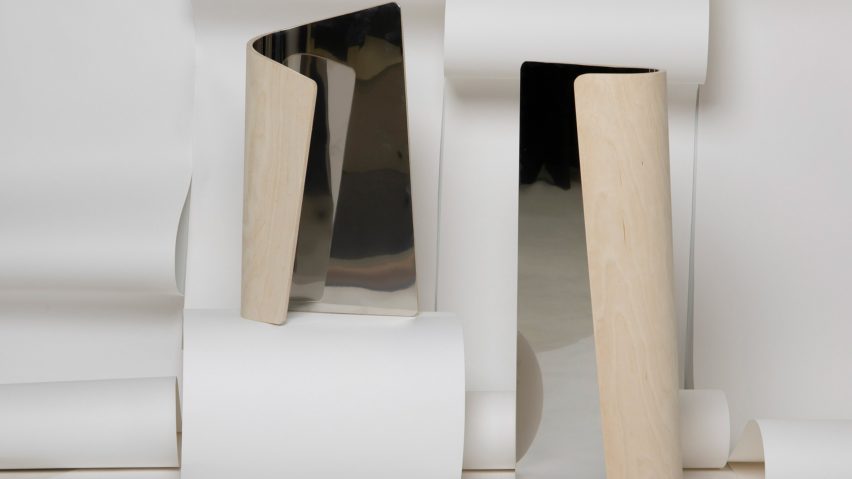
Six homeware products designed by students
Dezeen School Shows: we've picked six homeware design projects featured on Dezeen School Shows that aim to enhance interiors by combining contemporary and traditional techniques.
This roundup includes a 3D-printed vase "made with sound" that aims to celebrate Toronto's Chinatown and a rug informed by Jurassic coastal landscapes.
The selection of projects come from interior and product design courses at international institutions including New Designers, L'École de Design, Ryerson University, Estonian Academy of Arts, Camberwell College of Arts and University of East London.
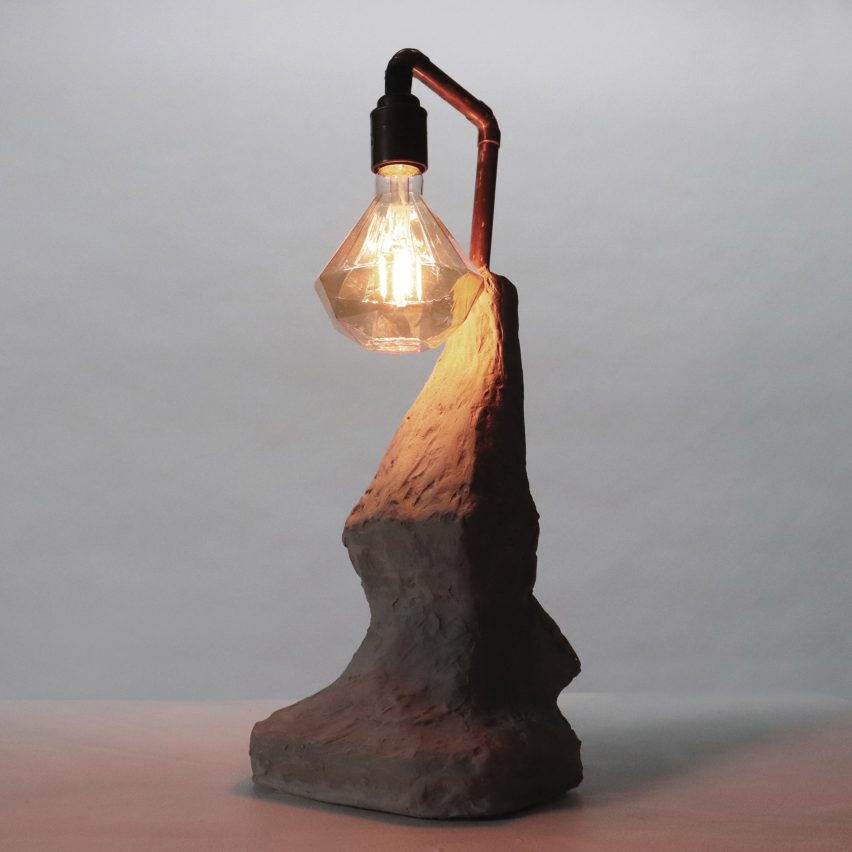
BA Interior Design student Jazmine Fagbayi has created Jagged, a lamp made from sculpted concrete. The bulb has a blunt shape, which was chosen to enhance the play between light and sharp corners.
Both the bulb and the concrete base are textured to enhance their handmade quality.
"This bright neon lamp is a prototype based on sharp angles that are seen in their research of dynamic shop design", said Fagbayi. "For the design, it was crucial to get a lightbulb that worked with the sharp corners."
Student: Jazmine Fagbayi
School: University of East London
Course: BA Interior Design
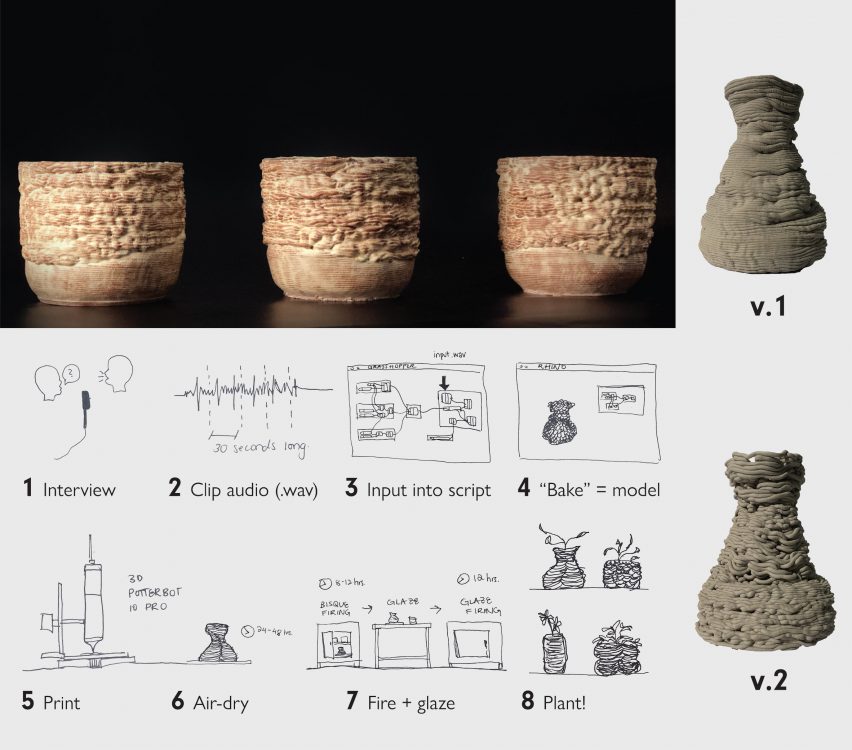
Wandia Muchiri, an interior design student at Ryerson University has created a clay workshop for Toronto's Chinatown community, which aims to highlight the importance of verbal culture.
According to Muchiri, Chinatown's history keeps living on thanks to its vocal knowledge. Due to the Spoken Form workshop, participants will be able to 3D print their own "sound" into clay, materialising the verbal culture.
"Spoken Form is a design method for a clay fabrication workshop with Toronto's Chinatown community," said Muchiri. "Recognising the limitations of digital fabrication tools in design, the workshop will have participants manipulate the clay 3D printing process with their own sound, re-introducing the human influence in clay fabrication."
Student: Wandia Muchiri
School: Ryerson University
Course: Interior Design Studio VII
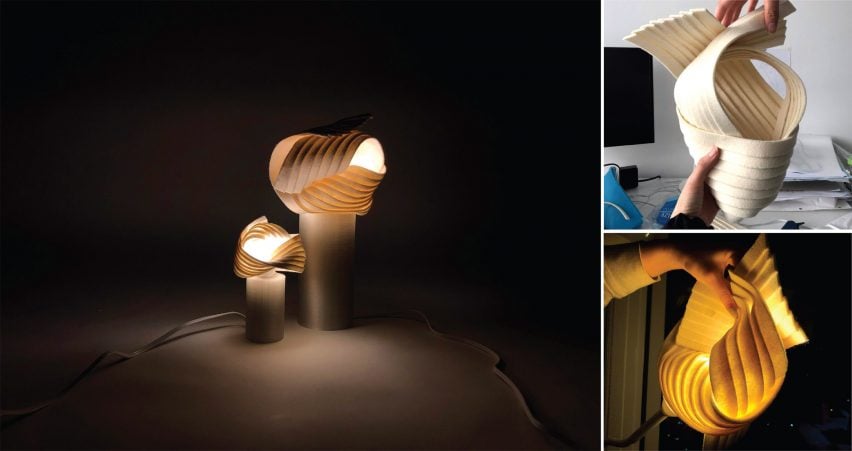
Nest by Jacqueline Hung and Pansy Wong
Design Dynamics Studio IV students Jacqueline Hung and Pansy Wong developed a lamp called Nest that takes cues from the organic shape of a cocoon.
Aiming to embody the feeling of home, Nest was born after several hand drawings and models. The final design of Nest features twisting forms that conclude by surrounding a warm lightbulb.
"From hand sketches to paper models, we made dozens of prototypes, searching for a form that embodied the feeling of home," said Hung and Wong. "The final iteration involved glueing together long, inch-wide strips, which allowed us to mould the felt into more organic and complex shapes than a flat sheet."
Students: Jacqueline Hung and Pansy Wong
School: Ryerson University
Course: Design Dynamics Studio IV

M0lly Jones, an illustration student at Camberwell College of Arts, has produced a rug that references self-distortion images.
Aiming to communicate the differences between self-perception, and physical and digital appearances, the final work involves a photograph of a rug that has been digitally wrenched.
"I got the idea of self-distorting when I was walking past a shop window while seeing three different versions of myself," said Jones. "I found it interesting as you can be perceived differently in so many ways."
Student: Molly Jones
School: Camberwell College of Arts
Course: BA (Hons) Illustration
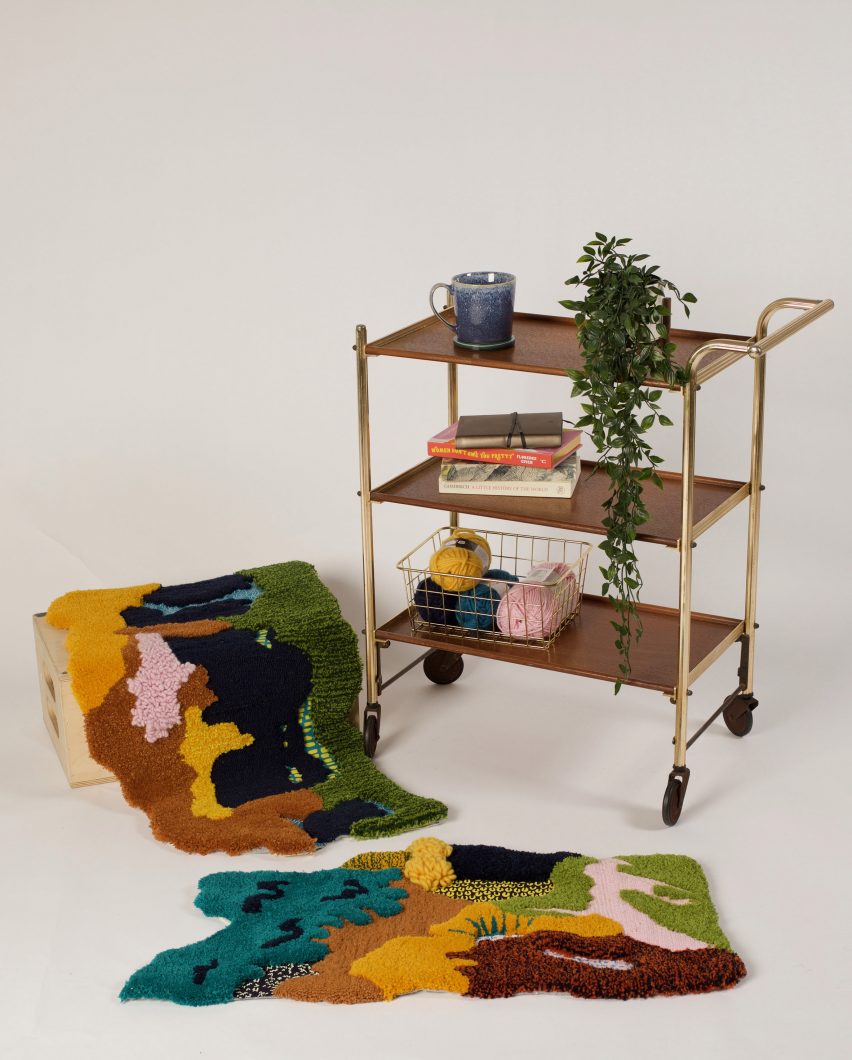
One Year In student Lily Jacobs has produced a two-piece rug made with UK-sourced and pre-loved materials that celebrate Jurassic coastal landscapes.
Jacobs uses bold colours encouraged by nature with the intention of brightening the living space and bringing the outside to the inside, by combining two textile techniques, tufting and screen-printing.
"I like to use bold, vibrant colours alongside an abstract and playful design style," said Jacobs. "Visually celebrate local coastal landscapes in the form of tufting, which effectively brightens the aesthetic of a home, office or studio space."
Student: Lily Jacobs
School: New Designers
Course: One Year In

Product Design student Kertu Liisa Lepik has completed a series of mirrors made from birch plywood and polished stainless steel.
Motivated by Plymax, a composite material that gives plywood strength and rigidity, Lepik's Mirrors are the result of several experiments combining different plywood and metal techniques.
"The project is inspired by Plymax, which is a metal-faced plywood that was produced by the factory," said Lepik. "Originally used as finishing material for partitions, dressing cubicles, and doors, the mirrors are the result of a series of experiments that led to Kertu Liisa Lepik's technique of pairing bent plywood with polished sheets of metal."
Student: Kertu Liisa Lepik
School: Estonian Academy of Arts
Course: Product Design, BA
Partnership content
These projects are presented in school shows from institutions that partner with Dezeen. Find out more about Dezeen partnership content here.